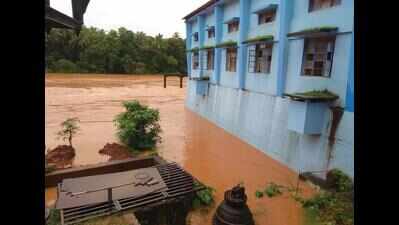Trending
This story is from July 24, 2023
Khandepar in spate, turbid water clogs filters at Opa

High turbidity levels increase the workload of the plant’s staff, as they have to clean the clogged filters repeatedly. The filters quickly become non-functional due to the density of water sediments
The Opa waterworks recorded turbidity as high as 400 NTU (nephelometric turbidity unit) on Sunday.

High turbidity levels increase the workload of the plant’s staff, as they have to clean the clogged filters repeatedly. The filters quickly become non-functional due to the density of water sediments.
Water containing 1 milligram of finely divided silica per litre has a turbidity of 1 NTU and up to 50 NTU is considered normal.
Nivruti Parsekar, an executive engineer of the water division, said the wash-off from mining pits in the surrounding areas drains into the river with rainwater and flows to the Opa catchment area. This, Parsekar said, leads to a rise in turbidity.
He further said the phenomenon is common during incessant rain along the banks of the Khandepar, but the water is safe for consumption.
“The water is released only after proper filtration at the Opa treatment plant,” Parsekar added. After raw water is drawn into a receiving chamber from the river, it is sent to sedimentation tanks to allow the silt to settle. Next, the water passes through three stages from sand filter beds to the chlorination plant and into the main balancing reservoir for storage and supply.
Sometimes consumers get reddish water because some fine particles remain even after filtration, but that is not harmful, Parsekar said.
End of Article
FOLLOW US ON SOCIAL MEDIA







